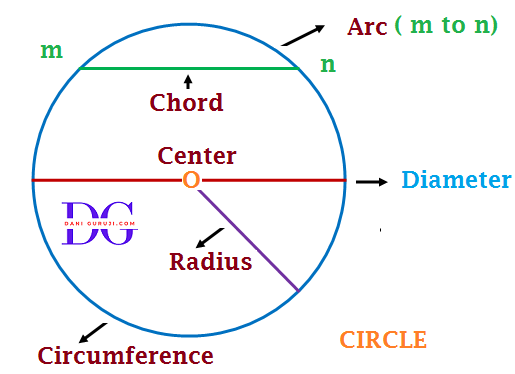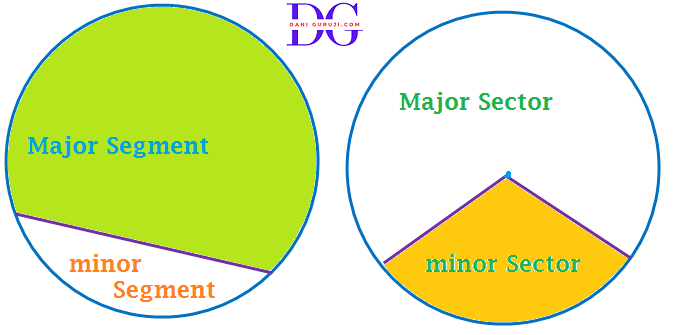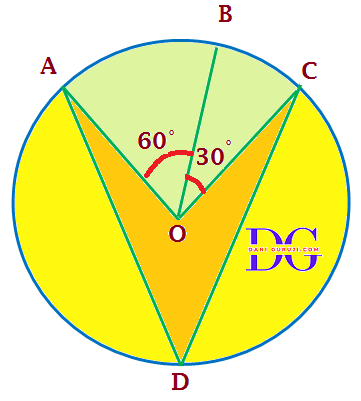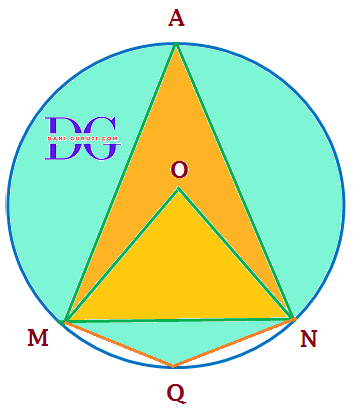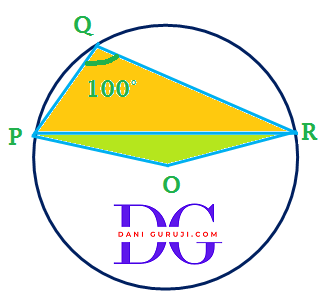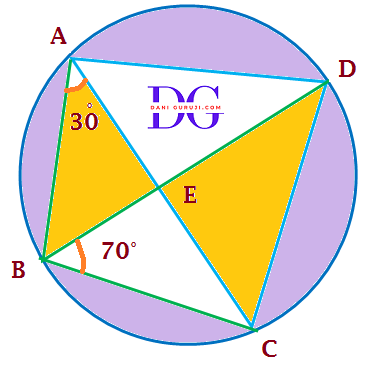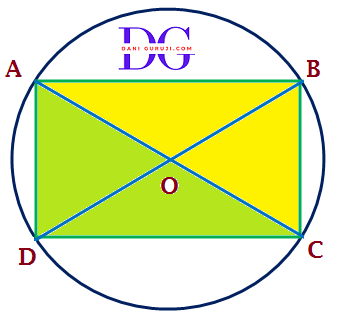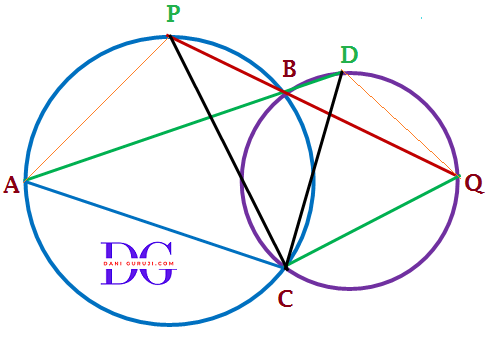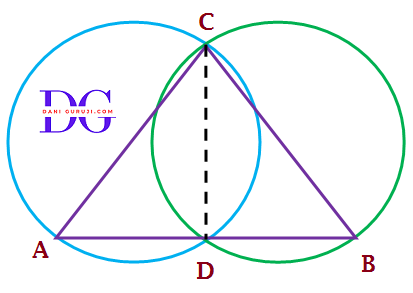Question 8
If the non-parallel sides of a trapezium are equal, prove that it is cyclic.
Solution :
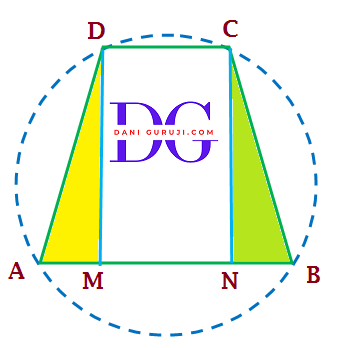
Let A, B, C and D are four vertices of trapezium ABCD , and the parallel lines are AB, DC
and the non parallel lines AD and BC are equal.
AB || CD and AD = BC
To Prove: ABCD is a cyclic trapezium.
Construction : Draw DM perpendicular to AB and CN perpendicular to AB
In ΔAMD and ΔBNC,
AD = BC
( Given AD = BC )
$ \angle $ AMD = $ \angle $ BNC
( By construction each angle is 90° )
DM = CN
( Perpendicular distance between two parallel lines is same )
Thus , ΔAMD and ΔBNC are congruent
( By RHS congruence rule )
Therefore,
$ \angle $ DAM = $ \angle $ CBN Or $ \angle $ A = $ \angle $ B
and $ \angle $ ADM = $ \angle $ BCN
( By CPCT )
A quadrilateral is cyclic if its opposite angles are supplementary. We need to prove $ \angle $ A+ $ \angle $ C = 180° or $ \angle $ B + $ \angle $ D = 180° .
Now,
⇒ $ \angle $ ADM + 90° = $ \angle $ BCN + 90°
⇒ $ \angle $ ADM + $ \angle $ MDC = $ \angle $ BCN + $ \angle $ NCD
( By construction $ \angle $ MDC = $ \angle $ NCD = 90° )
⇒ $ \angle $ ADC = $ \angle $ BCD
⇒ $ \angle $ D = $ \angle $ C
Now,
$ \angle $ A = $ \angle $ B and $ \angle $ D = $ \angle $ C
∴ $ \angle $ A + $ \angle $ B + $ \angle $ D + $ \angle $ C = 360°
( ∵ Sum of the angles of a quadrilateral is 360° )
⇒ 2$ \angle $ B + 2$ \angle $ D = 360°
⇒ $ \angle $ B + $ \angle $ D = 180°
( A pair of opposite angles of quadrilateral is 180° )
This equation proves that the opposite angles are supplementary.
Hence, ABCD is a cyclic trapezium.
